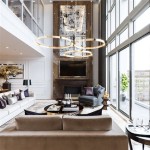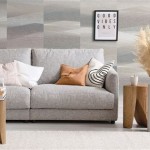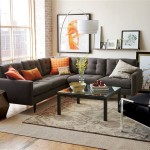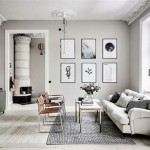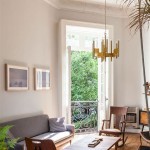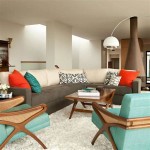Elevating Living Room Aesthetics with Moroccan Rugs
The living room, often regarded as the heart of a home, serves as a central space for relaxation, entertainment, and social interaction. Its design profoundly impacts the overall atmosphere and aesthetic appeal of the dwelling. A key element capable of transforming a living room's ambiance is the rug. Among the myriad rug styles available, Moroccan rugs stand out for their distinctive patterns, rich history, and capacity to infuse warmth and character into any space. The selection of a Moroccan rug for a living room necessitates understanding the diverse types, designs, and considerations involved in integrating such a piece into an existing interior design scheme.
Moroccan rugs are not simply floor coverings; they are woven narratives reflecting the cultural heritage and artistic expression of the Berber tribes of Morocco. Each rug, handcrafted with meticulous detail, possesses a unique story embedded within its intricate designs. The appeal of these rugs lies in their versatility, adapting seamlessly to various design styles, from bohemian and eclectic to modern and minimalist. Understanding the different types of Moroccan rugs is crucial when selecting the perfect piece to complement a specific living room environment.
The Diverse Landscape of Moroccan Rug Types
Moroccan rugs encompass a wide range of styles, each characterized by distinct weaving techniques, materials, and design motifs. Familiarizing oneself with these variations is essential for making an informed decision when selecting a rug for a living room. Some of the most prominent types include:
Beni Ourain Rugs: These rugs are perhaps the most recognizable type of Moroccan rug. Woven from undyed natural wool, Beni Ourain rugs feature minimalist geometric patterns, typically in black or brown against a creamy white background. Their plush pile and soft texture make them exceptionally comfortable underfoot, ideal for creating a cozy and inviting living room atmosphere. The simplicity of their design allows them to blend effortlessly with diverse decor styles, adding a touch of understated elegance to any space.
Azilal Rugs: Originating from the Azilal region of the High Atlas Mountains, these rugs are known for their vibrant colors and free-form designs. Azilal rugs often incorporate geometric patterns, tribal symbols, and abstract motifs, creating a visually dynamic and artistic statement. The use of recycled materials and hand-spun wool lends an authentic, artisanal feel to these rugs. Their bold and expressive nature makes them suitable for adding a pop of color and personality to a neutral or minimalist living room.
Boucherouite Rugs: Boucherouite rugs represent a unique departure from traditional wool rugs. These rugs are crafted from recycled fabric scraps, including cotton, nylon, and wool, resulting in a vibrant patchwork of colors and textures. Boucherouite rugs are prized for their eco-friendly nature and their ability to introduce a playful and eclectic element to a space. Their unconventional designs and sustainable origins make them a compelling choice for environmentally conscious consumers seeking to add a touch of bohemian flair to their living room.
Kilim Rugs: While technically a woven flatweave rather than a pile rug, Moroccan Kilims offer a distinct aesthetic appeal. These rugs are created using a tapestry weaving technique, resulting in a durable and lightweight floor covering. Kilim rugs often feature geometric patterns, bold colors, and intricate border designs. Their flat weave construction makes them easy to clean and maintain, and their vibrant patterns can add a touch of global sophistication to a living room.
Integrating Moroccan Rugs into Different Living Room Styles
The versatility of Moroccan rugs allows them to be incorporated into a wide array of living room design styles. The key to successful integration lies in selecting a rug that complements the existing color palette, furniture arrangement, and overall aesthetic of the space. The following are examples of how Moroccan rugs can enhance various living room styles:
Bohemian Style: Moroccan rugs are a natural fit for bohemian living rooms, which are characterized by their eclectic mix of patterns, textures, and colors. Azilal or Boucherouite rugs, with their vibrant hues and free-form designs, can serve as a focal point in a bohemian space, complementing other decorative elements such as patterned pillows, macrame wall hangings, and vintage furniture. Layering different Moroccan rugs on top of each other can further enhance the bohemian vibe, creating a sense of depth and visual interest.
Modern Style: While traditionally associated with more ornate styles, Moroccan rugs can also be incorporated into modern living rooms. A Beni Ourain rug, with its minimalist geometric pattern and neutral color palette, can add a touch of warmth and texture to a sleek, modern space. The simplicity of the rug's design allows it to blend seamlessly with modern furniture and decor, while its plush pile provides a sense of comfort and luxury. A strategically placed Moroccan rug can soften the harsh lines of modern furniture and create a more inviting atmosphere.
Minimalist Style: In a minimalist living room, where simplicity and functionality are paramount, a carefully selected Moroccan rug can add a subtle touch of personality without overwhelming the space. A Beni Ourain rug in a muted tone or a Kilim rug with a simple geometric pattern can provide a grounding element in a minimalist setting, preventing the room from feeling sterile or impersonal. The key is to choose a rug that is understated yet visually appealing, complementing the overall minimalist aesthetic.
Eclectic Style: Eclectic living rooms, which are characterized by their curated mix of styles and influences, provide ample opportunity to experiment with Moroccan rugs. A vibrant Azilal rug can be paired with vintage furniture and contemporary art, creating a visually stimulating and unexpected juxtaposition. The juxtaposition of different styles and textures is the hallmark of eclectic design, and Moroccan rugs can serve as a unifying element, tying together disparate elements into a cohesive whole.
Practical Considerations When Choosing a Moroccan Rug
Beyond aesthetics, practical considerations play a crucial role in selecting a Moroccan rug for a living room. Factors such as size, material, and maintenance should be carefully evaluated to ensure that the rug is both visually appealing and functional for the specific space and lifestyle.
Size and Placement: The size of the rug should be proportionate to the size of the living room and the arrangement of the furniture. A general rule of thumb is to choose a rug that is large enough to anchor the main seating area, with the front legs of the furniture resting on the rug. Alternatively, the rug can be placed entirely under the furniture, creating a more defined and grounded space. The placement of the rug should also consider the flow of traffic in the room, ensuring that the rug does not obstruct pathways or create tripping hazards.
Material and Durability: The material of the rug will influence its durability, texture, and overall appearance. Wool rugs are known for their durability and resilience, making them a suitable choice for high-traffic areas. Cotton rugs are softer and more affordable, but they may not be as durable as wool rugs. Recycled fabric rugs, such as Boucherouite rugs, are eco-friendly but may require more specialized cleaning. Consider the lifestyle and usage patterns of the living room when selecting the material of the rug.
Maintenance and Cleaning: Moroccan rugs require regular maintenance to keep them looking their best. Vacuuming the rug regularly will help to remove dirt and debris, preventing them from becoming embedded in the fibers. Spot cleaning spills and stains promptly will also help to prevent permanent damage. Depending on the type of rug and the severity of the stain, professional cleaning may be necessary. Following the manufacturer's instructions for cleaning and care will help to prolong the life of the rug and maintain its beauty.
Color and Pattern: The color and pattern of the rug should complement the existing color palette and design elements of the living room. Consider the overall mood and atmosphere that is desired. A light-colored rug can brighten up a dark room, while a dark-colored rug can add warmth and depth. A rug with a bold pattern can serve as a focal point, while a rug with a subtle pattern can provide a more understated backdrop. Test the rug in the space before making a final decision if possible, to ensure that it works harmoniously with the other elements of the room.
Choosing the right Moroccan rug for a living room is a process that requires careful consideration of various factors, from the type of rug to the overall design style of the space. By understanding the nuances of Moroccan rugs and applying practical considerations, it is possible to select a rug that not only enhances the aesthetic appeal of the living room but also provides comfort, durability, and a touch of cultural heritage.

7 Living Room Rug Ideas With Moroccan Carpets

Choosing The Right Living Room Moroccan Area Rug For Your Home Berber Creations

Handmade Moroccan Rugs For Living Rooms Salam Hello

Moroccan Rugs Styled 23 Different Ways Architectural Digest

The Boho Lab Your One Stop Shop For Moroccan Rugs And Decor

Moroccan Living Room Rug In White Floral Leaf Pattern Carpet Polyester Anti Slip Area Clearhalo

From The Atlas Mountains To Your Living Room Timeless Elegance Of

Styling Your Moroccan Rug Salam Hello

Orange Kilim Rug Handmade Moroccan Vintage Carpet Flat Weave Area For Living Room Bedroom Traditional Artistic Decor Etsy

Handmade Moroccan Rugs And Home Decor The Wool Rug

